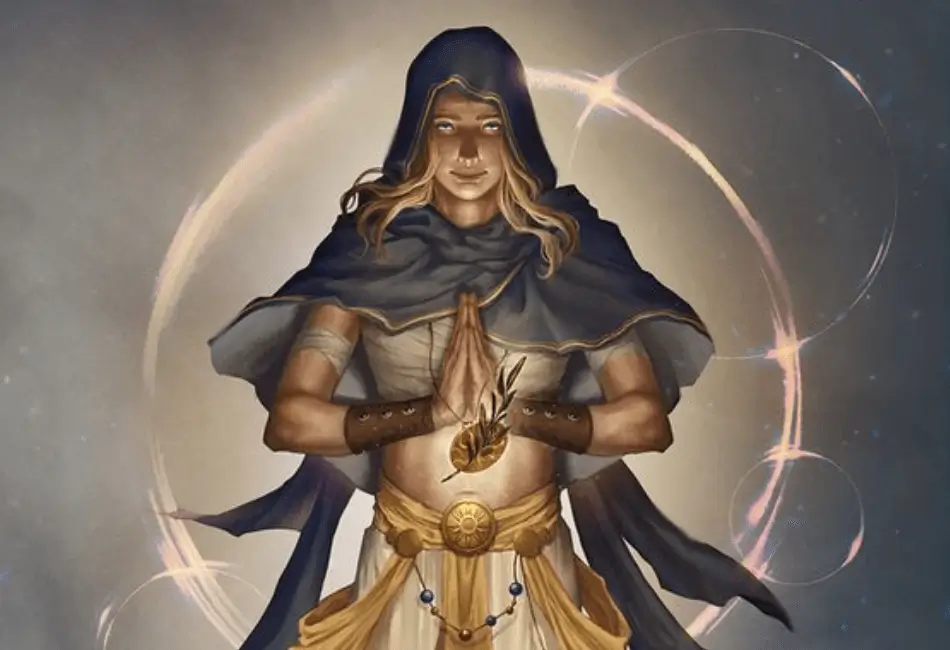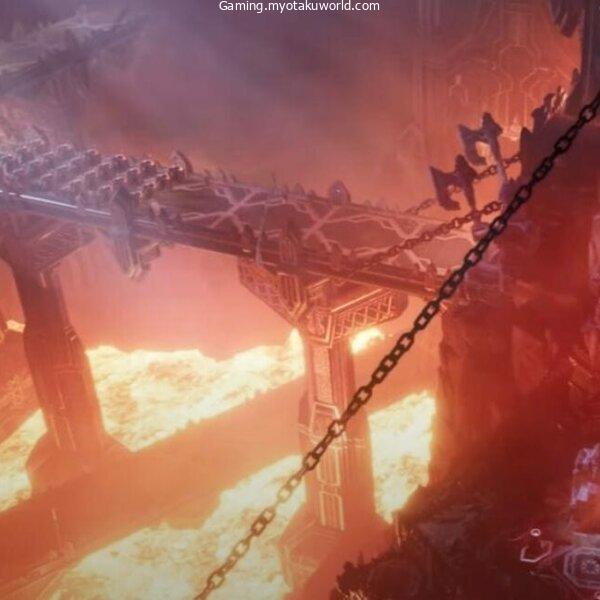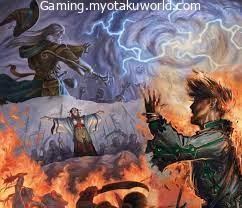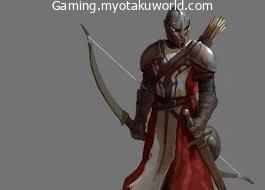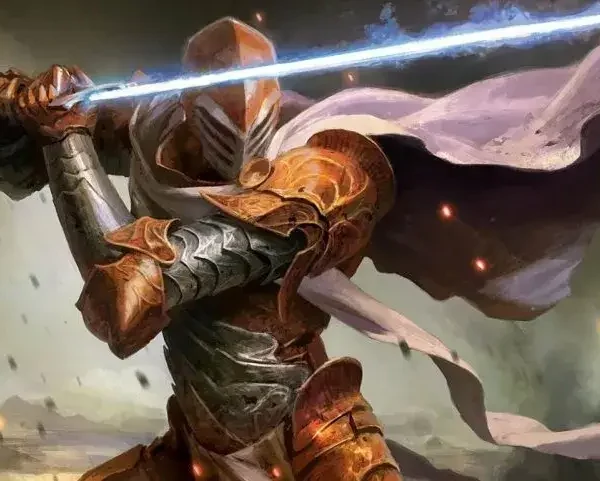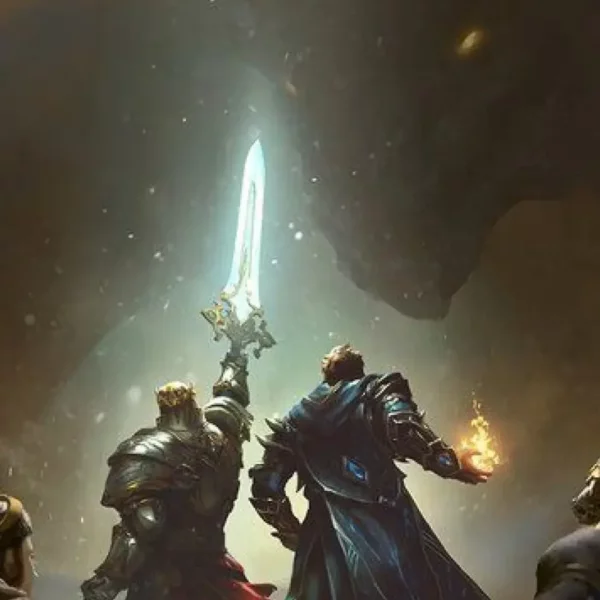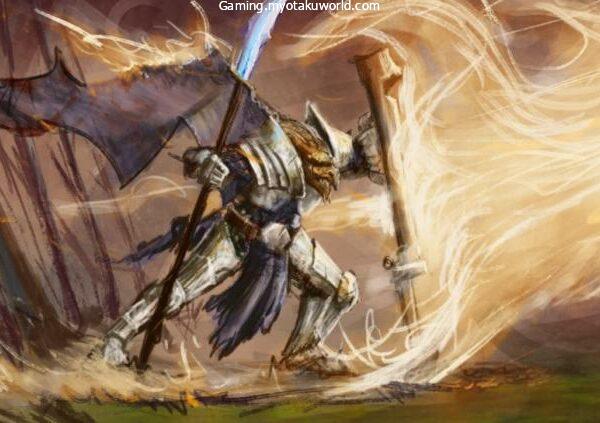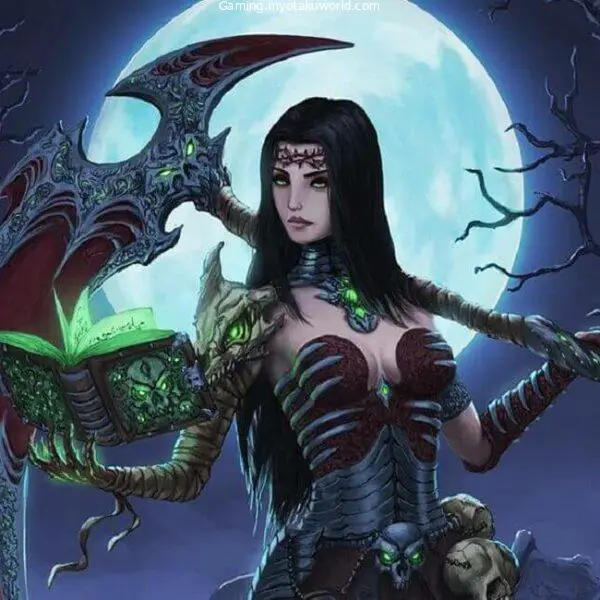Clerics can be divine casters, who get their magic abilities from the deity they worship.
Clerics are cloth-wearing men and women and are known for their ability to heal parties.
This is true.
D&D 5e allows you to play a cleric in many different ways.
No adventuring party will need a healer.
Clerics begin with proficiency in light armor, medium armor, and shields.
They also have Wisdom and Charisma saving throws.
You may be able to use heavy armor and martial weapons in some subclasses.
You can begin with a Warhammer or chain mail if you choose one of these subclasses or gain proficiency from another place.
A holy symbol is also required to start the game.
This symbol represents your deity and can be engraved on your shield or on a reliquary.
Certain cleric abilities require that you ‘present your sacred symbol’.
This is akin to a vampire hunter holding a crucifix.
This holy symbol can also be used to focus your spellcasting.
Let’s begin our Clerics 5e guide by taking a look at his abilities.
Abilities
Spellcasting (1st level)
Your deity gives you the ability to cast spells that can be used for cleric purposes at 1st level.
Clerics can prepare spells up to 9th levels and are fully spellcasters.
Clerics can prepare up to 9th-level spells.
Wisdom is your cleric spellcasting ability.
This represents your spirit and connection with your deity.
You can prepare new spells every day, giving you great versatility as a spellcaster.
Recon missions are a boon for you.
You can plan accordingly if you know what lies ahead.
Clerics can also be ritual casters.
Casting a spell that has the tag “ritual” allows you to spend an additional ten minutes and does not require a spell slot.
To cast the spell, you must have the spell ready.
Channel Divinity (2nd Level)
You can act as a conduit between God and the mundane to create magical effects.
This function is for the cleric to be used as an additional resource to spell slots that give you specific abilities.
Channel Divinity can be used by every cleric to become undead.
Your cleric subclass can also use Channel Divinity.
Turn Undead/Destroy Undead (second/5th level).
You can transform any undead creature that is within 30 feet of your Channel Divinity.
A creature can only run away from you when it is turned.
This effect expires after one minute, or if the undead takes damage.
This can be used to combat undead creatures.
It gives you the chance to escape, deal effectively with living enemies or cast large-area spells that make it difficult for them to return.
This ability can be used at the 5th level or higher.
Unstable creatures with low challenge ratings are not turned when you use it.
If they fail to make the saving throw, they will be destroyed immediately.
You can also turn undead enemies into some creatures to destroy others.
Divine Intervention (10th/20th Level)
You can call upon your deity at the 10th level to assist you.
To get your deity’s help, you must roll your level or lower on the percentile dice.
This will give you a 10% chance to work up to 19% to level 19.
This is your party’s hail mary option up to the 20th level.
At which point you automatically succeed and your deity always responds.
It is amazing to be able to have a God on your speed dial, but it can only be used once per 7 days.
Optional Abilities (TCoE)

Tasha’s Cauldron of Everything published optional features for each class.
These features are not mandatory so you will need to confirm with your DM if they can be used.
Additional Cleric Spells
Some aura effects are now available, which is more beneficial for frontline clerics who pretend to be paladins.
Power Word Heal is now available, which was previously only available as a bard spell.
Use Divine Power to Harness It
Is your domain missing a Channel Divinity option?
This resource can be used to regain a slot for spells.
Cantrip Versatility
This class allows you to swap out cantrips at levels 4, 8, 12, 16, and 19.
You can always swap out a cantrip that you don’t think is useful, but you won’t be stuck with it forever.
Blessed Strikes
This feature replaces the 8th-level feature in your domain, which is either Potent Spellcasting or Divine Strikes.
Instead of giving you the ability to empower either your weapon attacks or cantrips, both will be empowered with 1d8 radiant damage.
This feature is great for all subclasses.
This feature is worth considering if your Divine Strike’s damage type is poison, fire, or another highly resistible damage type.
You should note that Divine Strikes work only on your turn, while Blessed Strikes work even during opportunity attacks.
Subclasses
The roles of each cleric in the game and adventuring party are closely linked to the cleric’s subclasses, the Divine Domains.
Your Divine Domain is the power of the deity you serve.
For every cleric, this begins at level 1.
At the 2nd, 6th, and 8th levels, clerics have more subclass capabilities.
Clerics also have the option of multiclassing, as they can take only one or two levels of a cleric to create very unique combinations with other classes.
If Blessed Strikes is not an option, then the 8th level ability available to all clerics can only be used by those who are able.
Potent Spellcasting allows you to add your Wisdom modifiers to your cleric cantrips, while Divine Strikes increase your weapon attacks by 1d8, making either weapon attacks or cantrips the default attack option for subclasses.
Knowledge Domain
Knowledge clerics are dedicated to the God of knowledge.
They can be lore keepers or academics as well as secret hoarders.
This domain’s clerics are able to tap into the universal information wellspring and harness that power for their own benefit.
You are a great divination and utility expert as a knowledge cleric.
Knowledge domain spells offer many divination options, starting at the lowest level with Identifying and going up to more advanced options like Legend Lore.
You can learn additional languages at 1st level and acquire expertise in two other skills.
Channel Divinity at 2nd Level allows you to learn a skill or tool in ten minutes while you tap into a divine source of knowledge.
You can learn to read the thoughts of a creature and then create an idea in their head at the 6th level.
Lastly, standing in a room can reveal the plot of the DM for the entire campaign.
This domain is for you if your party needs some extra utility options and a solution to many out-of-combat issues. You can play a librarian, a lore keeper from an ancient order, and a nerd.
Life Domain
When you tell people that you are a life cleric, most people will think of it as a cleric.
This domain is the ultimate healer of D&D.
This domain has the highest number of healing spells.
The Healing Word is missing, which allows you to heal from a distance, but it can also be extremely useful in preparing Revivify.
You can acquire proficiency with heavy armor at 1st level.
This domain is highly defensible.
You gain a bonus for your healing abilities and become more efficient at healing.
Channel Divinity gives you another healing option.
This option has the great advantage of allowing you to divide it among multiple creatures, saving potentially many lives at once.
You can heal yourself by casting a healing spell at the 6th level.
At the 17th level, healing spells heal at the maximum roll.
This is great, but higher-level healing spells such as Heal don’t need any dice rolls.
This class is for those who want to heal and defend their allies.
You can still do great damage, just like every other subclass.
This class is not for you if you don’t feel the need to, as no one else is playing a Cleric.
The 5th edition does not require a healer.
Light Domain
You can harness the power of light, lens flares, and the sun to control the battlefield and blind, distract, or disable your enemies.
Light is symbolic of truth, beauty, and renewal.
As a cleric in this domain, you can also stylize how you look into the light.
Light domain spells include many fire-based damaging spells like scorching Ray and Fireball.
This domain has one of the highest damage outputs.
This domain is also able to control the battlefield with faeriefire and Wall of Fire.
You gain the light trip at 1st level and the ability to flash a light in the eyes of enemy when they attack you.
This can be a disadvantage.
Channel Divinity allows you to dispel magic darkness and deal radiant damage to your enemies.
You can shine light into the eyes of your enemies at 6th level when they attack you and your allies.
You can also release an aura light that makes enemies vulnerable to radiant spells and fire.
Many of the domain’s abilities were about causing disadvantages to your allies’ attacks.
Although it’s a shame you can’t blind your enemies, you still have great control over the battlefield.
Nature Domain
The nature domain is a way to access the same knowledge that druids, rangers, and other classes have.
Some abilities may not be of much use because they are situational.
Although this subclass isn’t terrible, it can be quite annoying.
Some area effects, such as Spike growth or plant growth (the latter creates more difficult terrain), are available in nature domain spells.
Charm effects are limited to animals only.
Many of these spells, including Tree Stride are not used.
You gain proficiency with heavy armor at 1st level.
Grab shillelagh to safely go into battle with people using a large stick.
Channel Divinity allows you to charm animals and plants for just one minute.
This fits the theme but you may never use it.
It only works with these two types of creatures.
You can reduce elemental damage by half at 6th level.
You have great flexibility with your divine strikes, which can deal lightning, fire, and cold damage.
Finally, you can also command any animals or plants you charm.
This charm lasts only one minute and makes the situational Channel Divinity a more situational feature of the class.
Tempest Domain
Tempest clerics worship Gods that govern storms, skies, or seas.
If you wish to play Thor, this domain is your subclass.
You are a tempest-cleric and have a prominent role in the frontline of battle.
Tempest domain spells include lightning and thunder damage spells.
These spells are great for your Channel Divinity option or Thunderbolt Strike.
You can use heavy armor and martial weapons to gain proficiency at the 1st level.
Also, you have the ability to explode with thunder and lightning if someone hits you.
These abilities strongly suggest that you should be fighting in the middle.
Channel Divinity allows you to deal maximum damage when dealing thunder or lightning damage.
You can knock enemies back at 6th level when you deal thunder or lightning damage.
Finally, you can become a storm and take flight outdoors.
This is a great domain to play.
You can keep your armor on longer and focus on doing as much damage as possible to the people around you.
Trickery Domain
The tempest cleric dedicates itself to Thor, while the trickery and deception cleric are dedicated to Loki or other gods of mischief.
This domain is more difficult to use than one that only deals damage.
It relies on deception, illusions, and trickery.
This domain can be a powerful tool for adventuring parties if it is used correctly.
Trickery domain spells include powerful deceitful options such as Polymorph and Disguise Self, strong utility options such as Pass Without Trace or Dimension Door, and deceptive options such as Charm Person and Modify Myth.
You can give your ally or yourself an advantage on Stealth (Dexterity) checks for one hour at 1st level.
This could make your Rogue sneakier or cancel out your disadvantage on group stealth checks for heavily armored fighters or paladins.
Channel Divinity allows you to create an illusion of your self for one minute, and cast spells directly from that location.
The illusion is immune to damage and weapons can pass through it so you should send it into battle, rather than risking your skin.
You can use your Channel Divinity at 6th level to make yourself invisible for a turn.
Blessed strikes are better than divine strikes, as they deal poison damage.
This is a strong resisted option.
You can also create illusions of yourself that allow you to appear in four places simultaneously and cast spells from each of them.
War Domain
The battlefield is where the church of a war-cleric worships violence.
Your place in the frontline is to deal damage with your strikes and enable your allies fight alongside you.
Many of the most powerful damage spells for clerics can be found in war domain spells.
Spiritual Weapon and Spirit Guardians are two examples.
You can use heavy armor and martial weapons at 1st level.
This ability is necessary to become the warrior deity desires you to be.
Bonus actions allow you to make limited attacks.
You can use your bonus action to swing a Spiritual Weapon.
You and your friends can each get a +10 on attack rolls by using two Channel Divinity options.
You can use Inflict Wounded to attack a sneak attack or hit something really hard.
Your Divine Strikes do the same damage as your weapon.
Finally, at 17th level you can gain resistance to piercing, bludgeoning and slashing damage by non-magical weapons.
Death Domain (DMG).
The death domain was created as an example of an evil class for dungeon masters to create villains.
If your DM permits it, you may play as a death domain cleric.
You can acquire proficiency with martial weapons at the 1st level.
To increase your durability, however, heavy armor proficiency are not available.
You can also target two creatures using a necromancy trip instead of one.
Toll The Dead is your single most damaging cantrip.
It can be cast at up to two enemies.
Channel Divinity adds a small amount of damage to melee attacks.
You can ignore resistance to necrotic injury when dealing with it at the 6th level.
Necrotic damage is dealt with by your divine strikes.
Finally, you can target up to two creatures with necromancy skills of 5th or higher.
Although it can be difficult to use because many of these spells work in melee, the ability to cast multiple curses on multiple creatures or to apply vampiric touch to multiple creatures makes it powerful.
Forge Domain (XGtE).
A God of the Forge is a group of clerics who are dedicated to learning how to harness the divine power and magic of the forge to create and imbue magic into items made of fire and metal.
You can gain proficiency with heavy and smith’s tools at 1st level.
This puts you at the forefront.
You can also imbue an armor piece or weapon with magic at 1st Level. These are powerful options that you can have at 1st Level.
Channel Divinity allows you to create anything up to 100gp.
It’s up to you to think of what item could help in your particular situation.
As you become proficient in the power of the forge, 6th-level gives you resistance to fire damage as well as an additional +1 to your AC.
Blessed strikes, which deal fire damage, are highly resistible.
The war cleric can also gain resistance to non-magical weapons piercing and bludgeoning damage.
However, you are also immune to fire damage.
Grave Domain (XGtE).
Grave clerics decide the fate of life and death.
This subclass is better than the death domain if you are looking to be a grim reaper.
You have a strong hand in who lives or dies.
Grave domain spells are the best for bringing back creatures from the dead, such as Revivify or Raise Dead.
They also include spells that prevent death, such as False Life or Death Ward.
When you cast a healing spell upon a creature with 0 hit points at 1st level you can heal them for the maximum amount.
It might be worthwhile to let someone who has 1 hit point fall unconscious before you heal them.
You can learn Spare The Dying, and you can cast it at a range or as a bonus action.
You can also detect undead within 60 yards of you, but this is not something you will use often.
Channel Divinity allows you to make one attack vulnerable to a creature, making it susceptible to double damage.
You can turn critical hits against yourself or your ally into normal hits by reaching the 6th level.
Finally, at the 17th Level, you and your friends begin to absorb the temporary life force of enemies you kill.
Although it may not provide a lot of healing, it is always possible to absorb the energy from enemies you kill without needing to react.
Arcana Domain (SCAG)
Arcana clerics worship the God of magic.
This subclass makes the cleric feel more like a wizard and leans into the arcane instead of the divine.
Channel Divinity is a weak option, but it can be very entertaining and blends the wizard and cleric together.
Arcana domain spells offer options to detect, dispel and imbue magic as well as divination options and hiding methods from divination magic.
You gain proficiency in the Arcana skill at 1st level and two additional cantrips.
Channel Divinity allows you to use the Turn Undead function only on one celestial or elemental fey fiend.
This is extremely limited.
This is similar to the Oath of Watchers Paladin, who can transform any aberration or celestial, elemental, and fey within 30 feet.
Your Channel Divinity at the 5th level allows you to banish the creature if it has a low challenge rating.
It is better to kill the creature with a cantrip.
You can remove spells from people at the 6th level if you heal them.
This is a great option if you are likely to face many enemy spellcasters.
Finally, at 17th Level, you can add four spells from the wizard spell library to your spell collection.
One 6th, one 7th, one 8th, and one 9th level.
Wish is, according to its own admissions, the most powerful spell available in the game.
It allows you to duplicate spells of 8th or lower levels or any other spell you can think of.
You can also create a backup of yourself using Clone and ride an invulnerable Illusory Dragon.
You can also send your enemies into space using Reverse gravity.
Order Domain (TCoE).
The order domain clerics believe that the laws of the universe and society must be followed and that it is only through order that divinity may be found.
You can use the order domain cleric to command your allies and lead your party into battle.
Order domain spells offer many enchantment options that will allow you to compel others to follow your orders and do what you ask.
Dominate Person or Slow can be used to target those who disagree.
You can gain proficiency with heavy armor at 1st level and Intimidation or Persuasion.
You can cast spells on allies and they can attack anyone next to you.
You can heal or buff your party members and they will immediately get to work.
Channel Divinity allows you to charm all creatures within 30 feet of your location and gets them to drop their weapons.
This allows your allies to reposition themselves or escape from danger without suffering any opportunity attacks.
As a bonus action, you can cast enchantment magic at the 6th level.
You can only resist divine strikes, which deal psychic damage.
At the 17th level, an ally who has suffered divine strike damage can inflict additional psychic damage if they are hit.
This last ability is both boring and underwhelming.
While additional damage is acceptable, a capstone-enchantment ability would be more interesting.
Peace Domain (TCoE).
The peace domain cleric, or the one who tells their enemies, “I really don’t want to do that,” is the character of the peace domain cleric.
They believe in the resolution and prevention of war, as well as standing up for those who seek to wage it.
This subclass is extremely powerful and is banned at certain tables.
These spells are known for their great buff spells, such as Heroism or Aid, but also include interesting options like Resist Sphere, which allows you to kill the boss and bring them back in time for a quick death.
You can gain proficiency in Insight, Persuasion, or Performance at the 1st level.
If you are within 30 feet of another member of your party, you can forge a peaceful alliance by giving them 1d4 for every d20 roll for ten minutes.
This buff can be added to Bless so that party members always hit.
This ability can also be adapted to proficiency, so even with a 1-level multiclass dip into it, you still get the full benefits.
Channel Divinity allows you to heal anyone you pass while running around the battlefield.
Your bond allows you to teleport your creatures to one another to take damage.
At the 17th level, the bond can extend to 60 feet.
If someone teleports to take damage, they are immune to it.
Twilight Domain (TCoE).
Grave clerics are responsible for balancing life and death.
Twilight clerics, on the other hand, oversee light and dark.
This order’s clerics guard against the evils of darkness and transform it into comfort and a home.
This subclass is forbidden at certain tables due to the large range of dark vision and the Channel Divinity option making it almost impossible for your whole party to be hurt.
You can gain proficiency with heavy armor and martial weapons at 1st level.
On initiative rolls, you can grant a creature an advantage.
Darkvision is also available at 300 feet.
This can be shared with other people for one hour.
Channel Divinity creates an aura around you of dim light with a radius of 30 feet.
This lasts for one minute.
Your party members will gain temporary hit points each turn when they are in this aura, which is massive because it is so powerful.
They can’t be charmed or scared.
You can fly for one minute up to three times per day at the 6th level.
Your divine strikes deal radiant damage.
Your entire party will gain half the cover when you are in your Twilight Aura at 17th level.
This means all your allies can make AC and Dexterity saving throws of +2 each.
Choose from a range of races

You can prioritize races with Wisdom scores increases if you don’t use the Customized Origin feature of TCoE.
Wisdom and Races with +2
- Firbolg: You can also acquire some natural magic abilities.
- Kalashtar: Wisdom saving throws are also available and you can resist psychic damage.
- Wildhunt Shifter: Wisdom checks and Survival proficiency are also available to you.
- Githzerai: Githzerai receives an invisible Mage hand, innate spells, and an advantage on saving throws against being charmed, scared, or both.
- Lineages: A cleric or hexblood, reborn, or cleric of dhampir is a character-rich in story and with unique abilities.
The best races to be a cleric if you’re using the Customized Origin feature are those that offer you complementary abilities.
For flight, consider an aarakocra or winged tiefling.
You can unlock a feat at the first level by combining your custom lineage with a variant human.
FAQs
Are Clerics Good?
Clerics can be a versatile and powerful class. There is more to clerics than being the healer. They can also cover all party roles.
Do Clerics Get Cantrips?
Yes. Clerics begin with three cantrips and they gain more as they level up.
What’s a Cleric Domain, exactly?
Domains refer to the name of cleric subclasses. They are set by the deity the cleric serves. The power of a deity is measured by the domain. A God of the ocean, for example, has power over all forces of nature and their domain is the entire world.
Does a Cleric Need a God to Live?
A typical cleric serves a God. However, some clerics serve a pantheon or philosophy (XGtE, pg 18).
Which Gods do Clerics worship?
Clericals serve Gods with power in the divine domain they have chosen. Talk to your DM to determine the identity and power of the God that you are serving.
Can Clerics have 2 Domains?
No. A class can only have one subclass.
Final Words
Clerics are people who dedicate themselves to a specific deity and receive many divine powers.
In D&D 5, Clerics can play almost any role, depending on the nature and purpose of the deity they serve.
They are full spellcasters and have unique healing options and resurrection options.
You don’t have to be a cleric just so your party has a healer.
All bards, rangers, druids, and paladins have healing options.
You can also go to town and buy healing potions.
